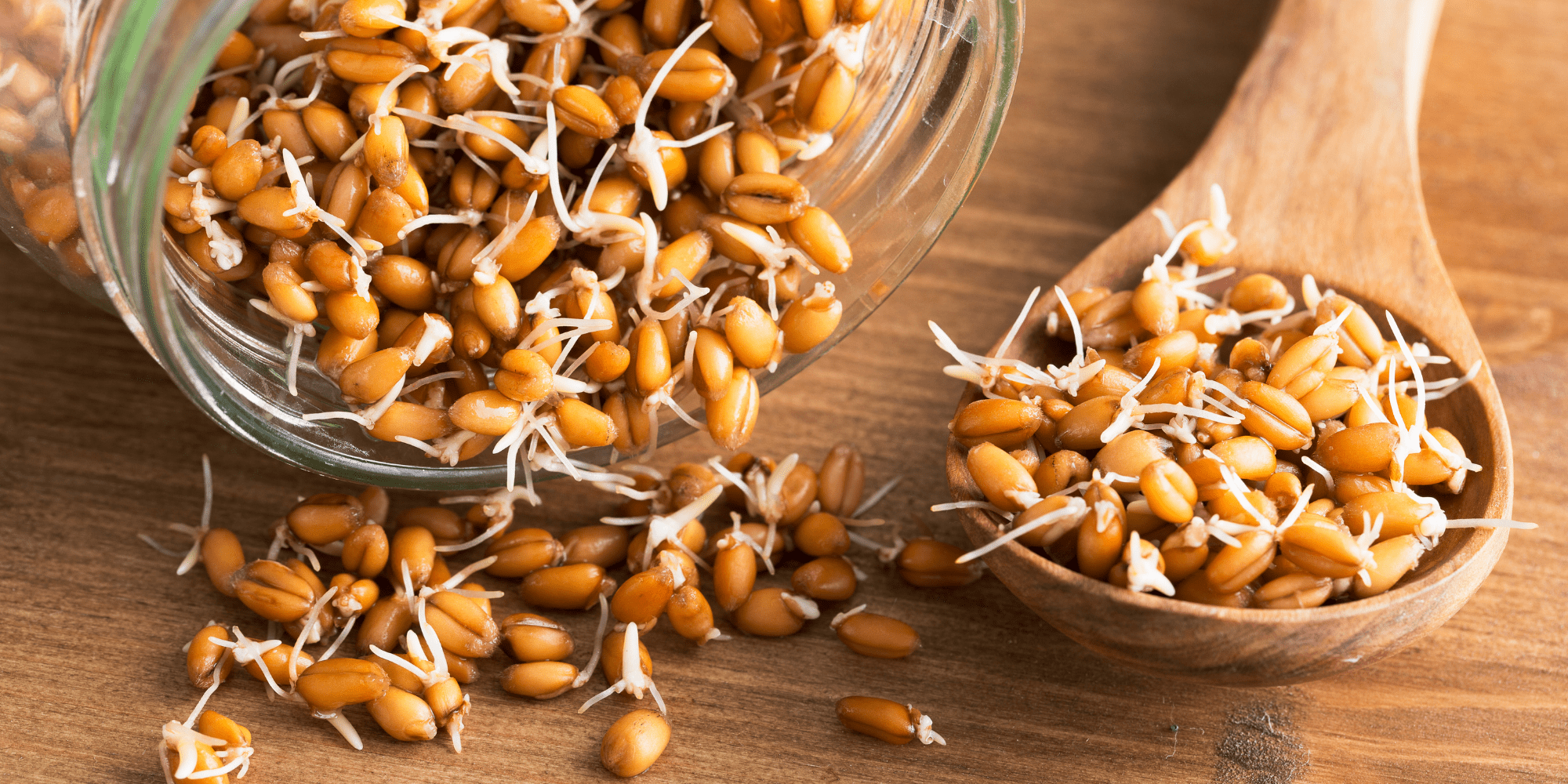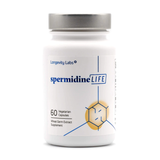
Your diet should be full of ingredients that provide nutritional value to help ensure you are as healthy as you can possibly be. One of these ingredients that should be in your everyday diet is wheat germ. Here is a quick breakdown of what wheat germ is, where it can be found, health benefits of wheat germ, and how you can implement it into your everyday diet.
What is wheat germ?
Wheat germ is an incredibly nutritious ingredient that has seen a huge boom in popularity in recent years, finding its way into nearly every health-oriented diet. It has a nutty taste and can be added to nearly any dish. Unfortunately, many people are allergic to wheat or try to avoid it altogether. For these people, there are wheat germ substitutes that provide many of the same health benefits.
Can wheat germ be eaten raw? Wheat germ provides numerous health benefits, as it’s the heart of the wheat berry. Two tablespoons are just 45 calories with 1 gram of unsaturated fat and 2 grams of dietary fiber, 10% of the recommended daily value of folate, 8% of your recommended daily value of phosphorus, magnesium, and zinc, 15% of your vitamin E, and 10% of your thiamin requirements. It’s also cholesterol and sodium-free.
What is wheat germ found in?
Wheat germ is part of a wheat kernel and is responsible for helping the plant reproduce and spawn new wheat (1). Despite its nutritional value, most food manufacturers strip the wheat germ from processed wheat products, thus removing its health benefits. Manufacturers do this to ensure the food products, such as white flour, can be stored for longer.
It is a common ingredient in granolas, cereals, and cornbread and can also be purchased at grocery stores in its raw form. Wheat germ is also available in liquid and gelcap form. It can be used as a food additive or as a nutritional supplement. It’s not uncommon for it to be used as a topping on yogurt, ice cream, or acai bowls.
What is wheat germ used for?
We’ve established what wheat germ is, where it’s found, and how nutritious it is, but what are some specific wheat germ uses? The ingredient provides so many different health benefits that it’s hard to list all of them. Here are some of the nutrients, vitamins, and minerals the ingredient provides and how wheat germ benefits can help you live a healthier life:
- Minerals - It contains phosphorus, magnesium, zinc, and iron, which keep our bodies strong
- Vitamin E - Getting your recommended daily dose of vitamin E is crucial for your brain health, as it helps protect brain cells and cell membranes
- Fiber - Wheat germ contains fiber, which helps balance our blood sugar
- B Vitamins - It contains B vitamins such as folate, vitamin B1, and vitamin B6, which help keep our heart healthy
- Fatty acids - Wheat germ also contains omega-3 fatty acids, which lowers inflammation and cholesterol
Wheat germ is the perfect complement to any healthy diet. Incorporating it into yours can help you ensure that you’re getting your recommended daily dose of vitamins, nutrients, and minerals.
Is wheat germ nutrients good for diabetics?
Recent studies have shown that wheat germ nutrients can help prevent diabetes and can help those who are already diabetic. Results have shown a direct relationship between insulin resistance, type 2 diabetes, and cardiovascular diseases (CVD). In these studies, wheat germ has been reported to have beneficial effects on insulin resistance.
This means that a healthy daily dosage of wheat germ can help prevent type 2 diabetes and CVD such as heart attacks, heart muscle disease, coronary artery disease, abnormal heart rhythms, and congenital heart disease. There is no exact daily recommendation for wheat germ, but it is recommended that you start with smaller doses then work your way up from there.
Is wheat germ oil good for your hair?
On top of the nutritional benefits provided, the benefits of wheat germ oil can also help reverse some of the damage inflicted on your hair. It can achieve this by replacing lost moisture, which can in turn protect your hair from damages. To get these benefits, it’s recommended that you apply wheat germ oil topically rather than ingesting it.
One of the main reasons why wheat germ oil is good for your hair is because it contains vitamin E, which can be easily absorbed into the skin and hair. Vitamin E can potentially help promote skin cell formation. It is also highly moisturizing, making it an ideal addition to shampoos and conditioners as dry hair is one of the leading causes of hair damage.
Is wheat germ good for your health?
Some research suggests that wheat germ can aid in boosting your immunity and help to keep your heart and cardiovascular system healthy. Research suggests that whole grains can reduce the risk of heart disease and help you maintain a healthy weight. There is also enough evidence to suggest that wheat germ oil can help you contain your cholesterol levels.
However, there are some drawbacks to the product. For example, those who are gluten intolerant or have gluten allergies should steer clear of any wheat germ supplements or products. Those who are on low-carb diets should also be careful of their wheat germ consumption, is it contains a high amount of carbohydrates. Wheat germ extract can also cause minor side effects such as nausea, gas, diarrhea, and dizziness.
Is wheat germ good for the skin?
As we mentioned earlier, wheat germ contains vitamin E, which is absorbed easily into your skin and hair. This makes it a healthy moisturizer replacement for processed processed products that contain potentially harmful ingredients. Applying wheat germ oil topically provides more benefits than moisturizing your skin.
It can also help heal dry or cracked skin and prevent scarring. Its abundance of vitamin E helps reduce skin damage, fight free radicals, support healthy collagen formation, and maintain even skin tone. When it comes to natural skincare products, wheat germ should be a part of everyone's routine.
Ways/Methods You Can include wheat germ in your diet
Many people think, since food manufacturers often strip the wheat germ out of wheat products, that it shouldn’t be added to food. This is far from the truth, as you can easily implement wheat germ into your everyday diet. Here are some of the ways you can use wheat germ:
- Use wheat germ instead of bread crumbs
- Use it as a topping for yogurt or oatmeal
- Add it to your favorite soup recipe
- Use it in smoothies
- Use it as a filler in meatballs or meatloaf
- Replace flour in baking recipes with wheat germ
You can find raw wheat germ at almost any supermarket or grocery store. Please keep in mind, however, that you should avoid wheat germ if you have gluten intolerance.
Supplements Can Help
Wheat germ helps keep our bodies healthy, both inside and out. It does this by providing a wide range of nutrients, minerals, and vitamins, that help keep our brains, cells, and hearts healthy. Another way our body can achieve this is through autophagy. During autophagy, our body recycles older, damaged cell components with healthier new ones. What does spermidine do for the body? Much like wheat germ, spermidine is a compound that can help keep our bodies healthy, both inside and out, by inducing the autophagy process.
Spermidine is found in many of the foods that we eat. And in fact, our spermidineLIFE® supplements are extracted from wheat germ. However, we often don’t get what we need from diet alone, especially as we age and our body needs more nutrients. This is where supplements can step in to help support a healthy body.







